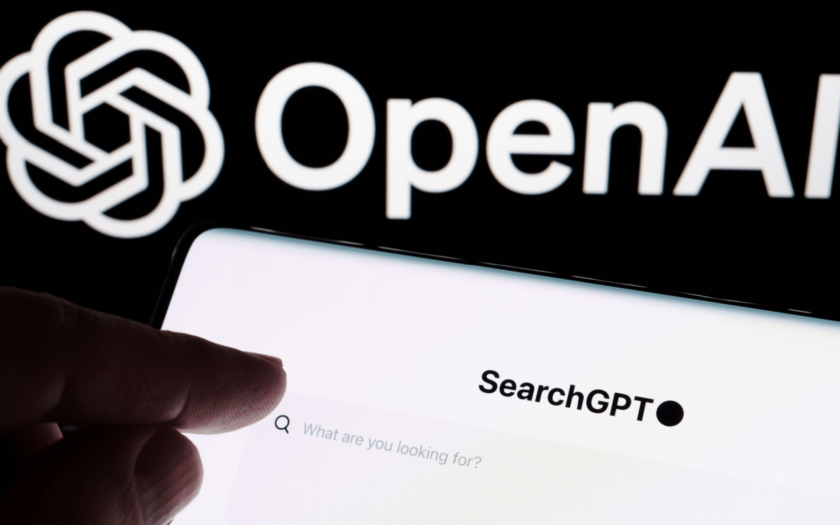With its characteristic cheerfulness, ChatGPT will tell you that the digital media landscape is “rapidly evolving.”
Google is regularly updating its algorithm, AI is getting smarter by the day and new tools are entering the market faster than fashion trends, which go in and out of style. That can mean opportunities and challenges for us.
One of the most talked-about evolutions to the search landscape is OpenAI’s SearchGPT, a product that could rival Google’s dominance soon.
At my agency, we recently gained early access to SearchGPT. Below are our takeaways about this new tool and its implications for digital marketing.
What is SearchGPT and how does it work?
SearchGPT is an AI-powered search engine that combines the strengths of traditional search engines with the advanced conversational abilities of large language models. It delivers answers to user queries using real-time information from across the web.
Rather than returning a list of links for users to sift through like traditional search engines, SearchGPT provides direct answers, summaries and insights based on an understanding of context and the user’s intent.
OpenAI doesn’t clearly state the exact details of how SearchGPT works, however, we can surmise that it uses something akin to retrieval augmented generation (RAG) which is a popular approach used by other AI search engines including, Perplexity and Google AI Overviews.
RAG is designed to reduce the likelihood of hallucinations in responses by integrating information from a database into the LLM response to enhance accuracy.
The model converts the search query into numerical embeddings that capture its meaning and searches a vector database containing trusted information sources. In this case, the web index is most likely provided by Bing based on OpenAI’s partnership with Microsoft.
By retrieving the most relevant content, SearchGPT can generate precise responses while linking back to the original web content, ensuring transparency and reliability.
The retrieved sources serve as additional context for the language model to accurately answer the user’s query.
Key features of SearchGPT include:
Conversational interface: Users can interact with SearchGPT in a more natural, dialogue-like manner.
Direct answers: Instead of a list of links, SearchGPT provides concise, relevant answers to queries.
Citations panel: A sidebar displays the sources used to generate the response, with links to the original content.
Follow-up questions: Users can ask additional questions to explore topics further, creating a more interactive search experience.
How does SearchGPT compare to Google AI Overviews?
My initial impression of SearchGPT is positive; it certainly outperforms Google’s AI Overviews (AIO).
While SearchGPT may result in fewer clicks for informational terms – and mostly for low-intent searches – in my opinion, this shift broadens the search ecosystem and opens new doors to connect with customers beyond traditional Google SERPs.
Google’s AIO still primarily relies on traditional search, with the addition of an LLM-generated response at the top of the page, which feels more like an enhancement of rich snippet results than a full transformation. Non-tech-savvy users may not notice a significant difference.
However, for marketers, two key distinctions stand out:
Citations.
Conversational search.
Google’s AIO uses an icon for references, offering less transparent citations, while SearchGPT mostly links directly from the publication’s name, which could impact click-through rates.
Additionally, Google’s AIO is far less conversational. In contrast, SearchGPT allows users to build on the initial response by expanding queries using the original web content, creating a more interactive experience similar to ChatGPT’s conversational thread UI.
This means marketers might find opportunities with SearchGPT to develop content strategies that cater to a much wider range of conversational queries, encouraging users to explore content in more detail.
5 key implications for digital marketers
1. Search is about to become more conversational
SearchGPT’s natural language processing capabilities allow for more nuanced, dialogue-like interactions. It can understand the context and meaning behind words, which means keyword research is likely to change dramatically.
Due to its conversational nature, users are expected to ask a broader range of questions, which presents marketers with opportunities to create highly targeted content.
Instead of focusing solely on translating queries into keywords, marketers will need to understand the key topics and questions users are exploring and develop content that directly addresses these needs.
Content should be engaging, written naturally and designed to meet user intent rather than merely optimizing for algorithms. This transition emphasizes the importance of creating content that resonates with users on a deeper level.
2. Incorporate rich media into your strategies
A multimedia strategy has been crucial in marketing for years and its importance is set to grow even further. SearchGPT has the capability to reference and describe various types of media beyond just text.
